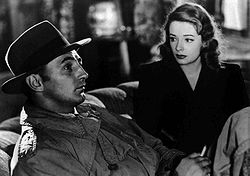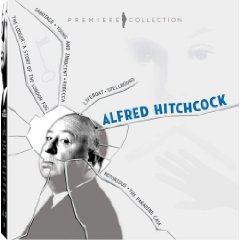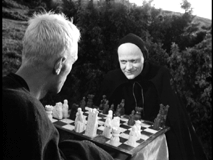After last month’s “epic” post, I thought I’d go for something simpler. Certainly, a number of our readers received an HD video camera over the holidays. Now what to do with the darn thing?
This article is not for my professional shooters. It’s the basic technical advice I give my students on the first day of school. It’s what I share with my documentary directors who, for whatever reason, need to take the camera out when I’m not available. The purpose is provide you with enough information to feel empowered but not overwhelmed.
I tried to included some tips you may not see elsewhere. Grab your camera, read along and then shoot something.
1. Your camera is valuable but not precious – I’ve seen people hold a camera like it’s the Shroud of Turin. Yes, it cost a pretty penny. Yes, you should take exquisite care of it and keep it clean. But don’t let that stop you from really putting it to work. Test it. Shoot an event. Mess with the settings. Every camera’s manual is online. Google the camera model number, the words “manual pdf” and save the pdf to your phone. That way you always have the manual with you. If you go too far in changing the settings, you can always restore to factory/default settings.
2. Shoot everything in Manual. You could create nice images with your camera’s settings on auto. But, I want to encourage you to take chances and dictate to the camera, not the other way around. Playing safe will not create art.
– Set your focus to manual. Imagine you are shooting your best friend’s wedding. The image is gorgeous. She’s smiling. Dresses are billowing. Perfect until a dove flies across your frame. If the lens is on auto, the focus will shift to the dove until it flies out of frame and then take its time shifting back to the bride. It’s distracting. Setting the focus to manual and locking the focus on her face ensures a professional looking image. Some HD cameras have advanced ways of finding proper focus. One way is to zoom (press the “T” for “Telephoto” button until it stops) all of the way to the subject, set the focus and zoom out to your desired composition.
– Know how to set your zoom to manual – Look at the underside of your lens and see if there is a “Servo” switch. When enabled, you control your zoom by the “T” and “W” buttons. If disabled, you can manually control your zoom and move it much faster than the T & W buttons are capable.
– Set your iris / exposure to manual. It will most likely be controlled either by a dial on the side of the camera or by changing the F-Stop on your lens. Play with it until you find the image pleasing to your eye. If you’re used to shooting stills on an SLR or 35mm camera, you will have confidence in this area. You’ll want to control the exposure of your image when filming under shifting light situations: a subject walks outdoors, clouds move over the sun, a spotlight turns on during a dance performance. Often, if the iris is on auto, the camera will make the image as bright as possible. When you chose manual, you can slowly adjust the exposure to your liking.
3. Go easy on the Gain or high ISO. Gain is a mechanical way of brightening your image when there is not enough light in your frame. I find relying on the gain deteriorates your image and looks amateurish. Before “upping the gain” , see if you can use an on-board camera light, open a curtain, turn on lights or move the subject to a better lit environment.
In the case of SLRs and more advanced HD cameras, you can raise the ISO/ASA of the camera when faced with low light situations. The higher the ISO/ASA number, the more sensitive your camera’s image sensor is to light. However, if you raise the ISO too high, the image can also deteriorate (i.e. “image noise”). Test your camera and decide for yourself what is optimum. You can always google the words “maximum ISO”, your camera model number and find a lot of advice. I found a very helpful video comparing the Blackmagic Cinema Camera to the Canon 5D MKIII and how each handles high ISO.
If your image is too bright, you can either lower your ISO, employ the camera’s internal ND (neutral density) filter or attach an ND filter. An ND filter reduces the amount of light entering the camera without affecting color rendition. You can also use an ND filter to achieve shallow depth of field.
4. Practice white balancing. In simplest terms, to “white balance” means to teach your camera what white is. The rule is you want objects that are white to your eye to be rendered white in camera. This is a fun rule to break. At the very least, set your white balance to either the appropriate indoor (light bulb icon) or outdoor (sun icon) setting. If you are in a location with several light sources with competing color temperatures (for instance: daylight spilling in and overhead track lighting), either eliminate one or decide which will be the “normal” light. What I really want you to learn to do is a manual white balance. Hold a piece of white paper near your subject, under whatever light will be illuminating them, zoom in to the paper and press the white balance button on your camera. Here is a basic short tutorial on the process.
After you’ve accomplished that, put the white piece of paper under the “wrong” light source and see what happens. Play. Your image might skew blue, magenta, cyan. Have fun. Sometimes when shooting a documentary, I rely on ATW (Auto Tracking White). It continuously adjusts my white balance while I’m shooting and changing locations simultaneously. I manually set my white balance when shooting in one location. Otherwise, I might see a distracting shift in color rendition during a simple pan or tilt.
5. Don’t be intimidated by Picture Profiles. Depending upon your camera, you’ll be changing the “profile settings”, “picture profiles”, “scene files” or “picture styles”. They allow you to change the color saturation, how whites and blacks are rendered, image contrast and many other visual preferences. There’s a mantra I’ve taught my students: “I don’t know but I can figure it out”. Film geeks are extremely generous with their knowledge online. A simple search will lead you to many posts and forums where people share their preferred cameras settings. They also post camera tests of their settings on youtube and vimeo. Watching these is a great way to learn from another’s frustrations and decide which settings you’d like to try.
Some blogs to continue your research are Philip Bloom (no one is more generous with his knowledge), VIncent Laforet (very technical but helpful). Creative Planet and Cinematography.com.
6. Simple lighting tricks. When you are starting out, its enough to have a on board light, know how to use a reflector and how to set up Three Point Lighting. More importantly, you should be looking for creative ways to add light without spending much money. On a recent documentary, I was shooting in an office with no windows and without a light kit. I swiveled the overhead lights, bounced them into a reflector and onto our subject. The result looked great. On other occasions, I’ve used Christmas lights just outside of frame, car headlights and the refrigerator for a light effect.
7. Start off with one lens. If you own a camera with exchangeable lenses, it will be very tempting to stock up on every possible lens. Don’t. I suggest you save your money and see what you are capable of doing with the lens provided (possibly a 50mm or 18-55mm). As you continue to play with your camera, your shooting style will emerge. You’ll notice what types of videos you want to make. You’ll become aware of what performance you need from your lenses. Then you can make an informed decision about which lenses (or accessories) to purchase.
8. There are plenty of excellent video production books. Two books I recommend and have used as teaching tools are The Shut Up and Shoot Freelance Video Guide by Anthony Artis and The Digital FIlmmaking Handbook by Sonja Schenk and Ben Long. Books introduce you to the technical language and shooting “rules”, but ultimately, experience is the best teacher.
After mastering the above, you might find my previous posts on camera movement and creating an unique looking film on a limited budget useful.
You can see my work at MagicEyeFilm.com and chat film @CybelDP









